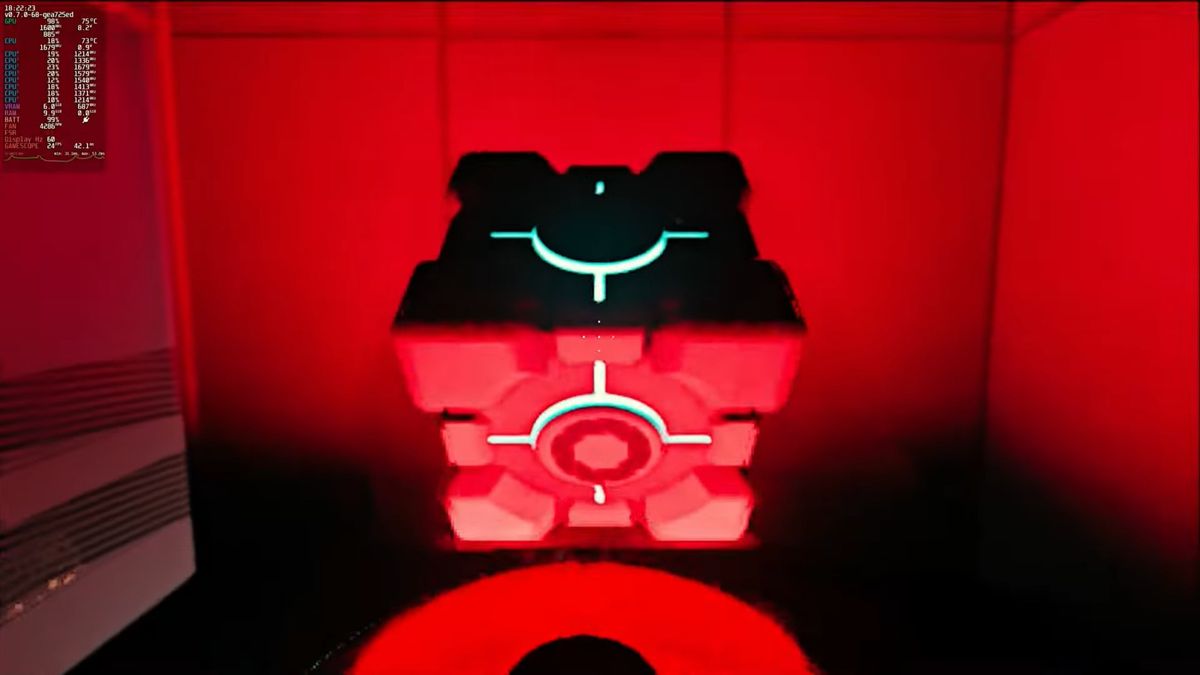When it comes to path tracing, the first thought beyond stunning game lighting is likely to be the heavy performance drain that it can demand on even the most high end of PCs. However, with some tweaking of the settings it seems like even the Steam Deck can get in on the path tracing action, and it’s even capable of a respectable frame rate.
YouTube channel NightSightProductions has shared a video of Portal RTX running on a Steam Deck at a perfectly playable 30 fps, an impressive achievement given the demanding nature of the path traced illumination used by the game.
The video shows the settings menus before gameplay begins and reveals that the game is running at 864 x 486 resolution, with secondary bounces disabled in the RTX Remix developer menu, which seems to be the secret to maintaining a decent frame rate on the Steam Deck APU.
Portal RTX uses 4 raw bounces on ultra settings, which is enough to bring any modern GPU to its knees at high resolution, so disabling secondary bounces entirely and lowering the res really takes the strain off that poor Deck.
Despite the chunky resolution settings used here and the fact that many game scenes look a lot darker than normal, the end result looks like a playable, and actually very pretty rendition of the game. It adds a much moodier, horror-like feeling to the environments that had me thinking more of Dead Space than it did of Portal, and more than that, made me rethink how I bounced off of the game when it was first released due to the demanding performance requirements.
If anything it’s a good example of why path traced lighting is such a big deal, and what it’s capable of adding in terms of atmosphere and a sense of realism even when other graphical quality settings are compromised.
It can be tempting to fall down the rabbit hole of always demanding high-resolution outputs and settings options cranked up to the nines, but sometimes the combination of lighting, atmosphere and art design triumphs over traditional graphical fidelity, and that’s brought into contrast here.
As with so many things, it’s not what you do, it’s the way that you do it, and we’ve already seen path tracing applications in games like Alan Wake 2 where, although the implementation is limited in the sense that it’s technically not full-scene path tracing, the results can still be absolutely spectacular in terms of adding a sense of atmosphere and realism to a game.
While games making use of full path-tracing are still thin on the ground, and many of us make do with upscalers to make sure conventionally ray-traced games run well, this is a good demonstration of how a limited implementation of path tracing can still add something graphically brilliant to the experience, and run well on much weaker hardware than you might expect.


